The US wasn't equipped for 2020's cycling boom. Its failures stem from a century of leaving bikes behind.
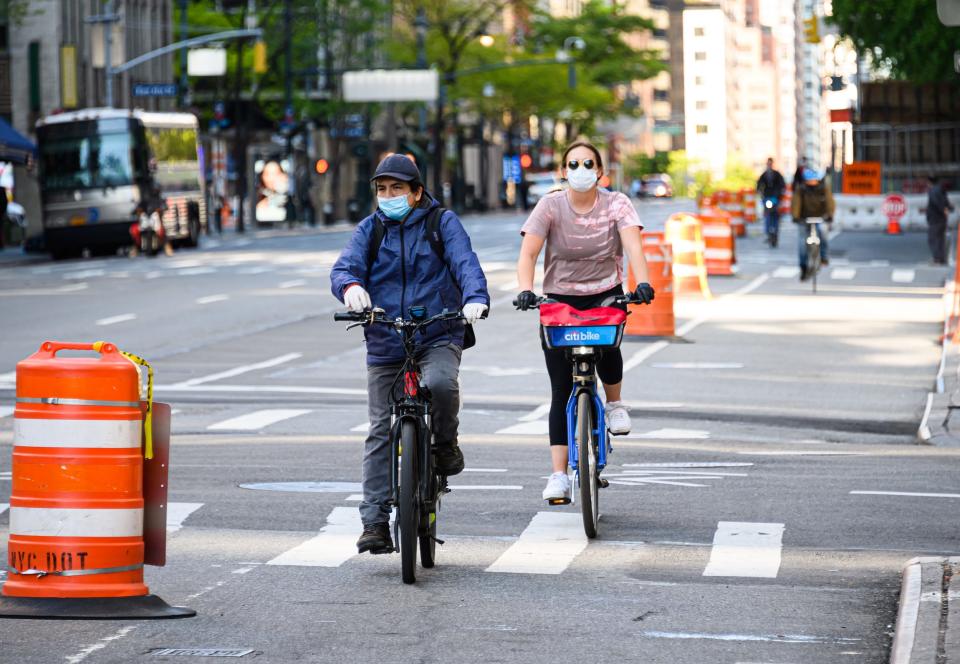
The pandemic forced cities to remold their streets to give more room to pedestrians and bikes, but it also thrust their longstanding lack of good biking infrastructure into the spotlight.
A natural ebb and flow in cycling popularity, car-centric and unsustainable planning practices, and the auto industry's effort to claim streets for cars all made US cities fall behind some of their bike-friendly European counterparts, experts said.
Cities have been making progress, however, and some of the temporary measures put in place during the pandemic are becoming permanent.
Walk the streets of many major US cities today and you'll find cones, bollards, and barricades creating space for pedestrians and cyclists that, before the pandemic, belonged to cars. It's an urbanist's dream, but it's come at an immense cost.
When COVID-19 hit last spring, cities from Oakland to Philadelphia scrambled to meet the needs of a public abruptly uprooted from its daily routine and forced to physically distance. Taking advantage of a steep drop-off in car traffic, transportation departments began closing streets to give people more space to roam while designating temporary bike lanes to accommodate a pandemic-era surge in cycling.
And although the pandemic highlighted some cities' ability to innovate, it also forced the US' longstanding lack of good biking infrastructure into the spotlight.
After all, people didn't start biking when the pandemic began; it's been on the rise for years. And although lots of American cities have decent bike lanes, scores of cities outside the US - most famously European metropolises like Copenhagen and Amsterdam - have spent decades building out highly developed and widely utilized biking networks.
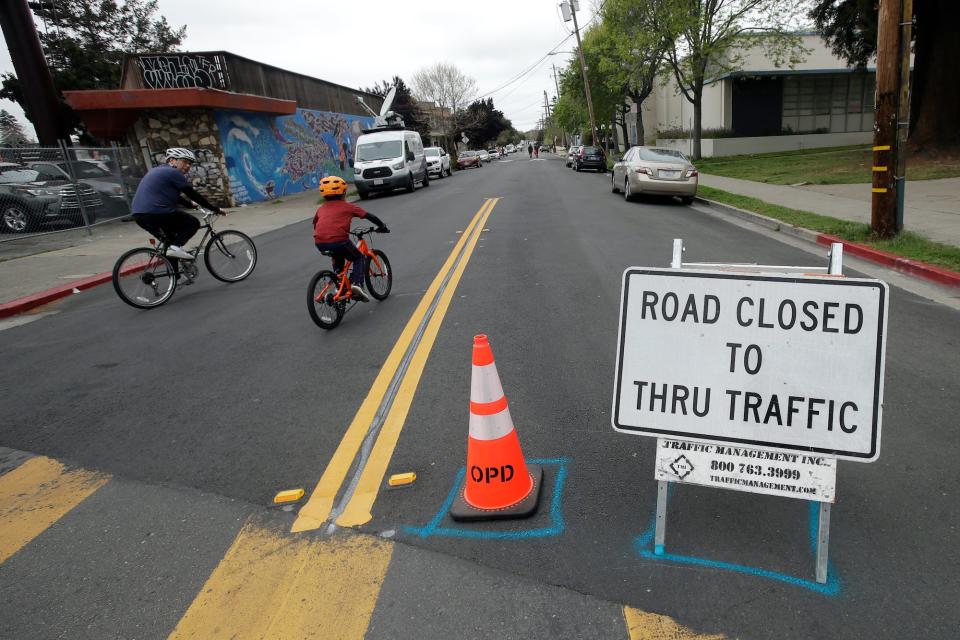
It's a wonder, then, that those ways of thinking haven't taken hold in the US, forcing the country's major cities to step up their efforts amid the crunch of a pandemic instead of remolding themselves over the course of many decades. But it's actually by design.
Mobility and urban planning experts say that cycling's relatively brief periods of popularity, transportation departments' reactionary and car-centric planning habits, and the auto industry's war to cement cars as the primary way of getting around - both on streets and in the American cultural consciousness - made the US fall behind many of its European counterparts.
The boom and bust cycle of cycling
The current obsession with biking - extraordinary as its backdrop may be - is just the latest in a more than two-centuries-long boom and bust cycle, Dr. Evan Friss, a historian at James Madison University, told Business Insider. As biking saw brief surges in popularity followed by decades-long drops in public interest, Friss said, there was rarely enough sustained enthusiasm and momentum for lasting infrastructure improvements to take hold.
Friss said the first major boom came in the 1890s, when the modern bicycle as we know it hit streets. The newly developed "safety bicycle" - as opposed to the high-riding and riskier pennyfarthing - exploded in popularity and led well-to-do cycling enthusiasts to push for paved roads and other ambitious infrastructure projects to make biking easier.
"Americans in cities across the country began dreaming up these cycling cities and thinking about how their lives, their culture, their society [would] be altered by having an affordable - eventually - private form of transportation, which never really existed before," Friss said.
During the late 19th century boom, a 3-foot-wide path of asphalt was built along the gutter in Manhattan for commuters going down to Wall Street, some hundred miles of lanes were constructed in St. Paul, Minnesota, an elevated wooden path was erected in Pasadena, California, and a dedicated bike lane was established from the middle of Brooklyn down to Coney Island, to name a few initiatives.

Interest faded around the turn of the century. By the Great Depression, when people flocked to bikes in large numbers again, the infrastructure of the 1890s had vanished. In the early 1970s, the oil crisis drove car owners to bicycles yet again, spurring a new emphasis on building bike lanes and bike-safety publicity campaigns. But, Friss said, that all died out in short order as well.
"In many of these boom periods, bicycles are witnessing an explosion of popularity despite, ... not because, of the infrastructure in place," Friss said. "They start to build infrastructure, but usually the periods of popularity are so brief that there's not much staying power to them."
Historically, US cities scrambled to catch up with demand rather than leading with infrastructure - and Friss said that, coupled with the natural ebb and flow of cycling popularity, is one of the chief reasons that major biking infrastructure projects never stuck.
US transportation departments, in large part, don't prioritize bikes or sustainability
Many European cities famous for their strong cycling networks were able to develop them because their transportation departments think top-down rather than bottom-up, Tabitha Combs, a researcher of transportation planning and policy at the University of North Carolina at Chapel Hill, told Business Insider. If you build it, they will come, the European planners say.
But that's not so in the US, Combs said. US transportation departments take into account anticipated demand when planning and funding new roadways, but they're much more reactionary when it comes to pedestrian and bike projects, Combs said.
"When it comes to walking and bicycling, most state DOTs and most local DOTs wait until there is a demonstrated demand, meaning there's a worn path on the side of the road where people are walking, or - as dark and morbid as it sounds - enough people are killed crossing a multi-lane road that eventually action is warranted," Combs said.
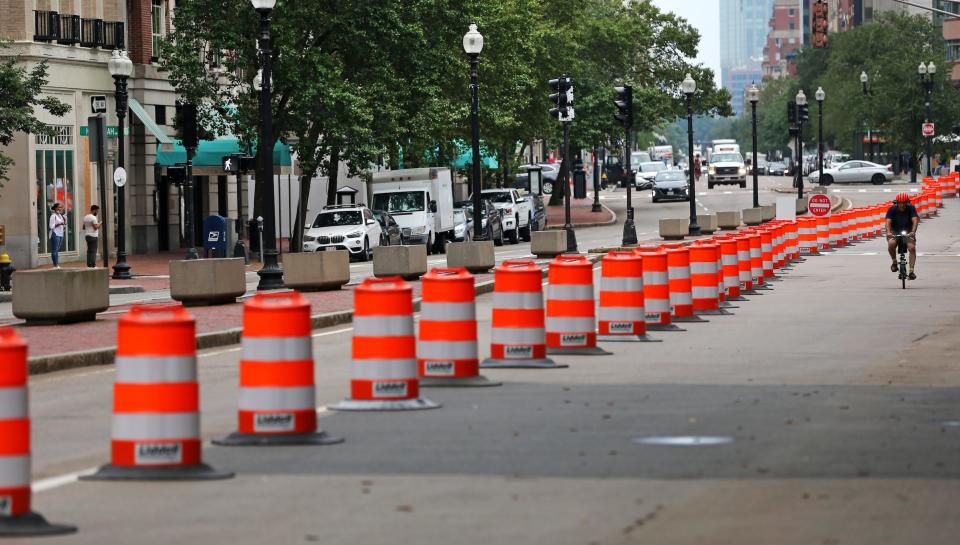
Many cities that have succeeded in building out biking infrastructure overseas did so as part of a concerted move to get people on bikes and push their cities in a more sustainable direction - not just to meet existing demand, multiple experts said. European transportation officials, Combs said, understood the negative environmental impact of car dependence much earlier than their US counterparts, and they began shaping city streets accordingly.
The key difference between US and European transportation authorities, according to Sam Schwartz, a transportation consultant and former New York City traffic commissioner, is that the latter "believe in science."
"Amsterdam and Copenhagen are fabulous examples of cities that looked at their horizon and saw where automobile dependence was taking them - in terms of the environment, in terms of access to opportunity, in terms of financial cost, the financial burden of providing streets for cars, and they said, 'We need to do something different,'" Combs said. "Places like that built out their bicycling networks and their walking networks in advance of the demand, and they're still building out those networks."
What US transportation departments historically missed, experts said, is that biking infrastructure can create demand by giving people more options.
European cities have incentivized people to ride by leading with infrastructure for some 50 years, Friss said. The result is that biking there isn't so much a niche activity with a particular demographic - as it is in the US - as an established way of getting around that's embraced by all genders and ages, Friss said.

But the philosophy surrounding bike infrastructure has evolved somewhat in recent years.
Friss said the latest bike boom - which began in the mid 2000s and continues to this day - has seen a substantial push for initiatives that don't just meet demand, but also promote sustainability and get more people to ride. That's partially why it has lasted more than a decade, he said, while previous booms tended to fizzle out after six or eight years.
Although a lot has changed since Schwartz oversaw the construction of New York's first protected bike lanes in 1980 - which were met with huge opposition and were quickly torn out - the general attitude within government that road projects take precedence over biking or pedestrian initiatives persists, he said.
"We have a budget in New York State and New York City over the next 10 years of about $25 billion for roads and bridges," Schwartz said. "The Queens Ribbon [Schwartz' proposed pedestrian and cycling bridge going into lower Manhattan] would be about $100 million. And I can't find anyone in government willing to take it seriously."
Automotive interest groups worked tirelessly to claim city streets for the car
The story of how bikes wound up sidelined from city streets is inextricably linked to the parallel tale of how cars came to dominate them.
"As automobiles got prioritized on streets, they became hostile environments for everybody else," Peter Norton, a historian at the University of Virginia and the author of Fighting Traffic: The Dawn of the Motor Age in the American City, told Business Insider.
The prevailing historical narrative would have you believe that cars were so useful and attractive that they were destined to rule US roads, but Norton said that narrative was largely propagated by the auto industry itself.
"The version of history that we've been told primarily comes from automobile businesses," Norton said. "They were the first historians of the car, and they're still the most vocal historians of the car today."
In reality, Norton said, there was always strong opposition to the automobile - even from its earliest days - and auto industry groups have spent the last century reshaping roads and molding public opinion to better accommodate them.
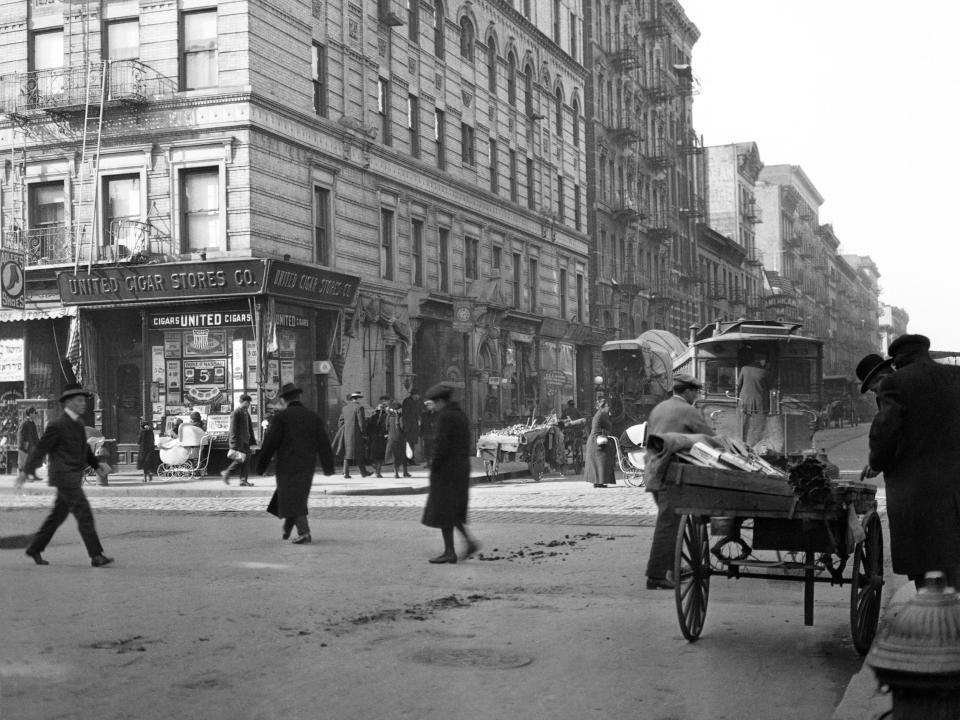
When cars first hit the road in significant numbers in the early 1920s, Norton said they faced a severe backlash as they disrupted the formerly pedestrian-friendly streets and began killing thousands of people annually. The laws, social norms, and planning standards of the time all put pedestrians first, and most major institutions agreed that motorists - not pedestrians - would need to make concessions to keep streets safe.
Threatened by the budding anti-car movement of the 1920s, auto manufacturers, dealers, and enthusiast groups set out to redesign laws and engineering standards to claim streets for the car, Norton said.
Around that time, automakers popularized the term "jaywalking" and lobbied to make it a crime across the country, Norton said - both as a strategy for keeping the roads free of pedestrians, and for shaming those who dared overstep that boundary. "Jay" was contemporary slang for someone from outside the city - a close approximation today might be "hayseed" or "hick."
The industry also helped craft the 1928 Model Municipal Traffic Ordinance, a federal guideline cities could use to manage traffic that said pedestrians could only cross streets at designated crosswalks.
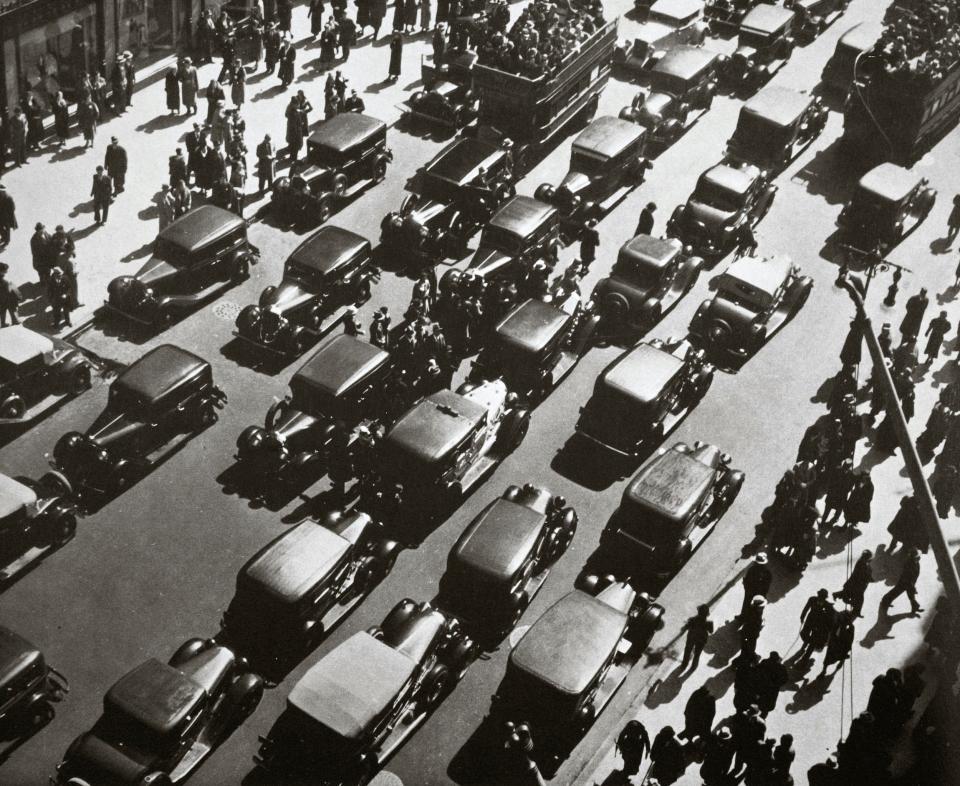
In the early 1930s, the National Highway Users Conference - a lobbying group formed by General Motors, the American Automobile Association, and other industry groups - began a wildly successful campaign to make highway construction a public responsibility, and the 1956 Federal Aid Highway Act cemented that responsibility. It heavily subsidized highway construction and laid the groundwork for the current, near-50,000-mile interstate highway system that runs through nearly every major central business district in the country.
A cultural offensive
The industry also waged a pervasive cultural offensive to shift public perception of the automobile and, eventually, cement cars as an immutable fixture in the American way of life, Norton said.
The notion of the US' love affair with the automobile, Norton argues, isn't so much an organic attraction, but rather the result of a concerted, decades-long public opinion campaign. That very turn of phrase - "America's love affair with the automobile" - first appeared in the late 1950s as a GM marketing slogan, Norton said, and then was used to promote a 1961 television special on the early history of the car called "Merrily We Roll Along," hosted by Groucho Marx and sponsored by DuPont, which had a 23% stake in the automaker at the time.
By the late 1920s, Norton said practically every public school in the US had traffic-safety education, and most of the materials were provided at no charge by AAA. That too was instrumental in teaching an entire generation - and those that followed - that streets were primarily a place for cars, not for pedestrians or cyclists.
Where do we go from here?
Despite the bike-friendly initiatives some cities have introduced in recent years, they still have a long way to go. Nearly 860 cyclists were killed by drivers in the US in 2018, making it the deadliest year for bikers since 1990, according to Outside Magazine.
Many urbanists think city dwellers would be better off if some of the temporary changes made to streetscapes became permanent. And at least in some cities, that's happening.
Seattle announced in May that at least 20 miles of its Stay Healthy Streets would remain closed to car traffic permanently. Austin City Council decided in September to keep protected bike lanes established in the city in June, and Boston is doing the same, replacing traffic barrels with permanent posts on several downtown streets.
But temporary measures don't need to become permanent to be successful. Whereas before, any new project had to surmount all types of hurdles and secure funding before becoming a reality, this moment has introduced experimentation - affording cities and residents the ability to test-drive infrastructure overhauls without committing completely.
To Combs, the US has always been a follower rather than an innovator in planning, and this new era of experimentation may finally change that.
"There are some very important lessons for the field of transport planning and engineering in that we can actually learn by doing - we don't have to wait for there to be a standard and a precedent," Combs said. "We can actually experiment.
"And that, I think - I hope - is part of the paradigm shift for transport planning."
Read the original article on Business Insider

 money
money 